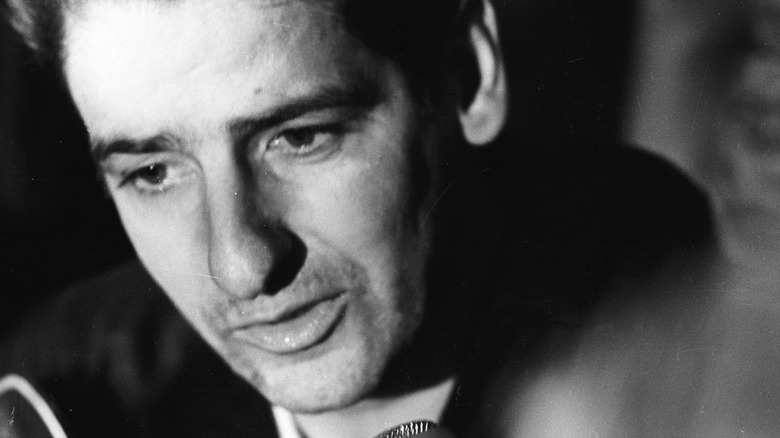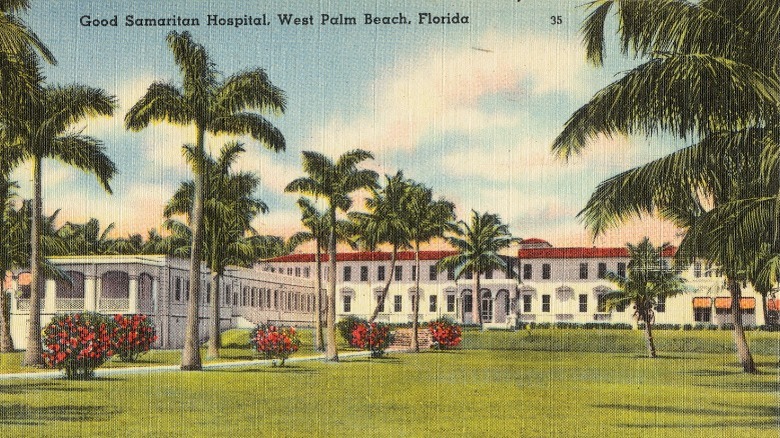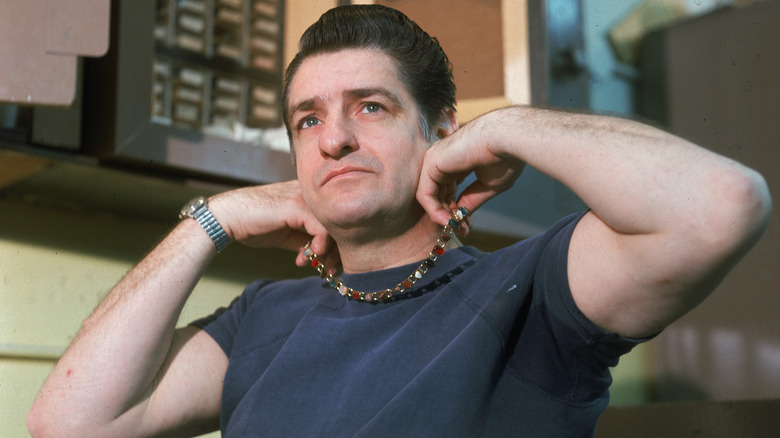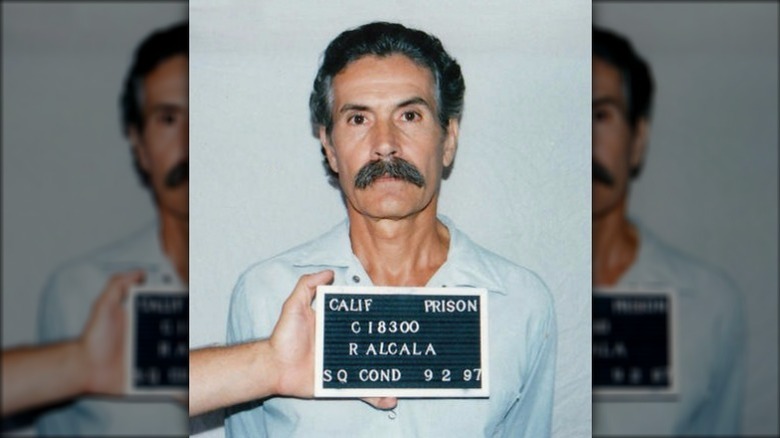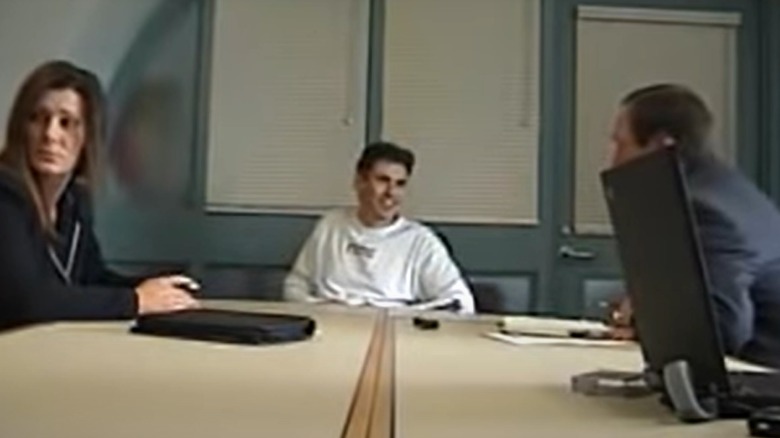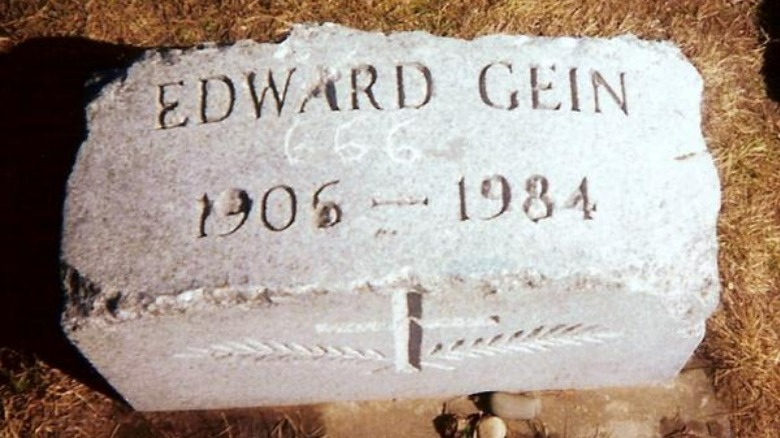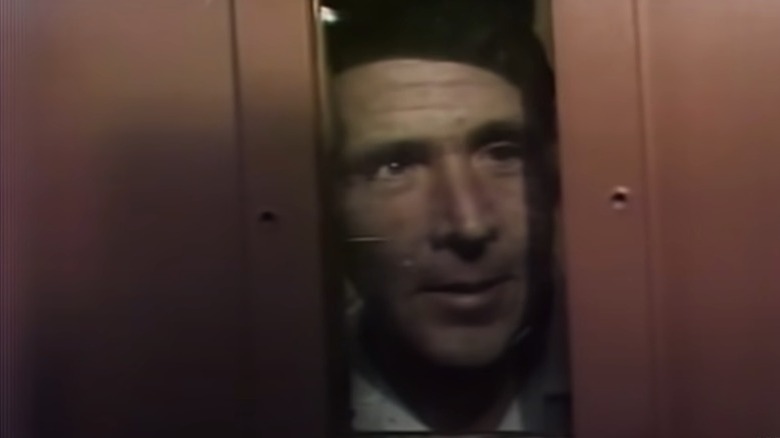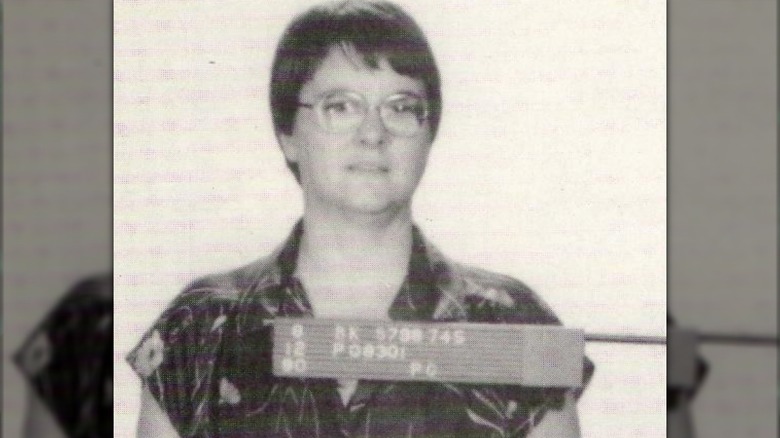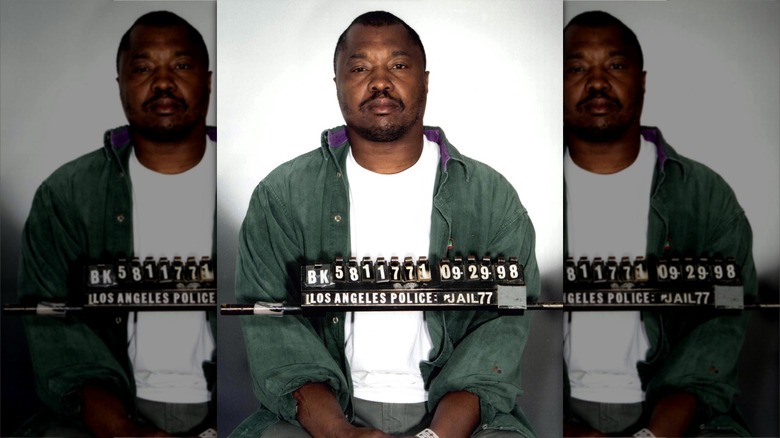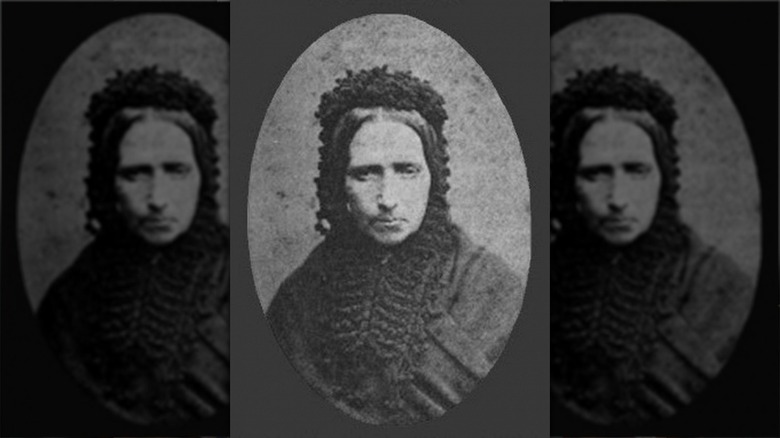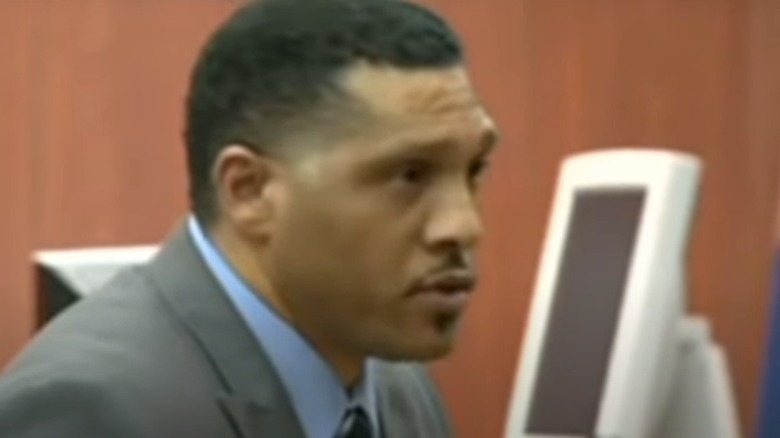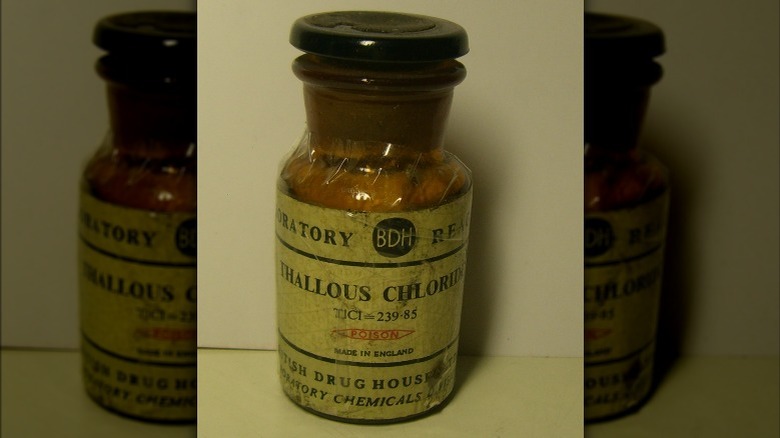Famous Serial Killers Who Were Virgos
Methodical, detail-oriented, fixated on cleanliness, great work ethic — just a few of the traits Virgos are known for. The kind of attributes that make Virgos such standouts in fields that demand their just their kind of exacting attention, like accounting, editing, or research. But Virgos are not machines. No, Virgos are also surprisingly gifted at working with people. Career site Monster even suggests that they make excellent life coaches and social workers. And with their communication skills, Virgos, it seems, always know just the right thing to say.
By now you've probably guessed that the "Maiden" or "Virgin" of the Zodiac is incredibly influential. And it's not so much that they have twin natures as the fact that their mighty powers can be used for good — hello, Ava DuVernay, Keanu Reeves, Prince Harry, Zendaya, and Virgo queen Beyoncé — or ... not so good.
Because, while there are plenty of down-to-earth, industrious, and caring Virgos among the sign's ranks, there are also plenty of serial killers.
Richard Angelo
More than almost any other sign, Virgos desire to be of service. Pair this with the sign's notorious fixation on health and wellness and it makes sense they'd be drawn to the medical field. HuffPost lauds Virgos' tendency to be reliable, analytical, and observant as reasons they make standout health care workers (well, before going on to acknowledge that Virgos can also be seen as skeptical, fussy, and cold). Perhaps that desire to be of service is what made Richard Angelo get into nursing.
According to Murderpedia (you can see where this is going), Richard Angelo worked on Long Island's Good Samaritan Hospital in the mid-'80s. But doing the lifesaving and necessary work of nursing just wasn't enough to sate the former honor student and Eagle Scout's lifelong craving for praise. As he explained to authorities once he was arrested, "I wanted to create a situation where I would cause the patient to have some respiratory distress or some problem, and through my intervention or suggested intervention or whatever, come out looking like I knew what I was doing."
In fact, during his brief tenure at the hospital, there were 37 "Code Blue" emergencies during shifts he worked. His victim count remains in dispute, with some sources citing as few as six murders (per Criminal Minds) and others suggesting the number may be as high as 25 (Murderpedia). Ultimately, Angelo wasn't methodical enough — as one of his victims was revived by another nurse who thought to test what the patient had been injected with. Richard Angelo was convicted of multiple felonies, including second-degree murder and manslaughter, and was sentenced to 61 years to life.
Albert DeSalvo
Despite the name Albert DeSalvo being forever linked to the grisly Boston Strangler murders of the early 1960s, there are as many who curse his name as those who devoutly believe DeSalvo was innocent. But crucially, DeSalvo never claimed that. In fact, following an arrest for another charge, DeSalvo confessed to the authorities that he was the man who'd been breaking into the homes of (primarily) elderly women before sexually assaulting and murdering them (per Biography). Though it's not known why DeSalvo would make this claim (aside from craving attention for a job well done, a trait he shared with fellow Virgo, Richard Angelo), his family and (at least, initially) his attorney, F. Lee Bailey doubted whether DeSalvo was really the Strangler.
Following his arrest, DeSalvo was sent to Bridgewater State Hospital for psychiatric evaluation. It was there that DeSalvo made the acquaintance of a fellow resident named George Nasser — a man many believe was the real Boston Strangler, per CBS Boston. The theory is that Nasser (a convicted killer, unlike DeSalvo, who'd only previously been popped for robbery and auto theft, and was a solid suspect in a series of sexual assaults and peeping Tom incidents) fed details only a killer would know to DeSalvo in order to convince the authorities of his guilt. Per Biography, many believe the motive was splitting the reward for identifying the killer, and DeSalvo, who'd already come to terms with the idea that he would likely remain in prison the rest of his life, could also potentially sell his story to Bailey or the newspapers and set his family up financially. It's the kind of methodical plan only a Virgo could hatch. Ultimately, the plan failed when DeSalvo was murdered while incarcerated and the case remains shrouded in mystery.
Rodney Alcala
Among the worst places anyone could imagine a serial killer lurking among potential victims, a kids' summer camp ranks right up near the top. After all, it's the stuff of horror blockbusters. But that's exactly where Rodney Alcala was found by observant teen campers who just happened to recognize the face of their arts counselor as one of the FBI's Most Wanted. Remember what we said about Virgos and helping professions? With his social skills and capacity for teaching, Alcala was actually on his third summer season working at the camp when he was caught, according to Radford University.
But while it might seem easy to fool naive teens, you might be even more shocked to know that Alcala is known as the "Dating Game Killer" for his appearance on a 1978 episode of the program, which — as a goal-oriented and charming Virgo — he naturally won. Fortunately, for Cheryl Bradshaw, the unlucky contestant who chose "Bachelor #1," she picked up on his weird vibes almost immediately and declined her "prize" reports All That's Interesting.
Though Bradshaw would never become one of Alcala's victims, he was later convicted of killing seven people though authorities worry he may be responsible for as many as 100, per Oxygen. Sadly he likely took many of his secrets to the grave when he died in September of 2021.
While this is hardly a scientific assurance, it's likely the majority of Virgos you encounter will be as average as any other person (obviously, Beyoncé is an exception). Should you find yourself accepting their help, being charmed by their way with words, or on a date with a Virgo who just seems a little too good to be true? Be like Cheryl and follow your instinct.
Paul Bernardo
From outward appearances, Paul Bernardo probably wouldn't strike you as the most likely candidate for being a serial killer. According to "Karla Homolka and Paul Bernardo: The Ken and Barbie Killers" (via All That's Interesting), Bernardo was born on August 27, 1964, in Ontario, Canada, and had what seemed to be a pretty unremarkable childhood. But something apparently snapped when his home life was interrupted, and he developed a violent streak – one that led to him becoming known as the Scarborough Rapist.
But that wasn't the only moniker that Bernardo would accumulate in his lifetime. In 1987, Bernardo met Karla Homolka, and the two fell in love – not despite his homicidal tendencies, but because of them. See, Homolka not only knew about Bernardo's 5-year stint raping innocent women, but she also encouraged him to keep things going, even "gifting" him her younger sister (the two of them drugged, raped, and accidentally killed her in 1990). And then things only escalated from there; the so-called Ken and Barbie Killers murdered and brutalized two more women over the next few years.
But in 1993, Homolka left Bernardo and tried to turn him over to the authorities, downplaying her own complicity and acting as the victim. Investigators saw through the ruse, though, and after a 2-year-long trial (via The National Post), both were found guilty and taken to prison. The trauma their crimes inflicted was far from done, however; they had recorded everything, and while those tapes served as indisputable evidence, they also scarred both the victims' families and court reporters who covered the case.
If you or anyone you know has been a victim of sexual assault, help is available. Visit the Rape, Abuse & Incest National Network website or contact RAINN's National Helpline at 1-800-656-HOPE (4673).
Ed Gein
Ed Gein might have the most impressive legacy for a serial killer: He was the inspiration behind the main characters of "Psycho," "The Texas Chainsaw Massacre," and "The Silence of the Lambs."
According to Biography, the "Butcher of Plainfield" was born on August 27, 1906, and raised in an unnaturally isolated environment. Gein's trail of bodies started after the death of his father in 1940; Gein's brother was found dead, apparently burned in a tragic accident (which many now believe to be intentional). But the death of his mother a year later is really what started Gein down the path of the truly disturbing. People in town – as well as some buried corpses – began to disappear. Gein himself wasn't directly implicated until the disappearance of Bernice Worden in 1957, at which point investigators were able to search his home for evidence. And, oh, they did indeed find evidence.
Worden's body was found decapitated and gutted, hanging from the ceiling, as "Ed Gein: Psycho!" details. But that's not all. Gein had stored organs in jars, turned human skin into clothing and masks (which, yes, he wore around the house), carved bones into bowls and cutlery, and sliced apart corpses to assuage his, well, scientific curiosity. (There was also some necrophilia. Just to add to this nightmare.) No one could doubt Gein's guilt, and he confessed. But he was initially found insane and wouldn't be deemed fit to stand trial for a decade, at which point he was declared guilty and reinstitutionalized.
Henry Lee Lucas
"The Confession Killers" – the name has quite the ring to it, doesn't it? The moniker refers to the pairing of Henry Lee Lucas (born August 21, 1936, per Biography) and Ottis Toole – two murderous birds of a feather who both came from broken childhoods and had blood on their hands by the time of their meeting in 1975. Lucas himself had already killed his mother (via "Serial Killers: Up Close and Personal: Inside the World of Torturers, Psychopaths, and Mass Murderers"), and eventually, the couple bonded over both their traumatic childhoods and lust for violence. Which led to their homicidal road trip starting in October 1979. The couple ripped through 26 states, murdering – and sometimes raping, torturing, mutilating, or cannibalizing – people without guilt or discrimination, per The Chicago Tribune. In truth, they just did it to bond with each other, trading notes on their techniques along the way.
Lucas and Toole eventually separated, committing a few more murders solo before being arrested in 1983 and 1984, respectively, and that's where the story gets odd: Lucas (and later Toole) began confessing to crime after crime. At first, it was an investigator's dream; together, they laid claim to hundreds of unsolved crimes, earning them their unique moniker. But the confessions started feeling too far-fetched, and police couldn't believe them, despite their scarily specific details.
Ultimately, Lucas admitted to confessing because it earned him trips outside of the prison walls, leaving investigators scratching their heads. Estimates for their true number of murders fall between three and a dozen, but which were false confessions, and what's the real truth behind all of those cases?
Carol M. Bundy
LA's Sunset Strip sounds like the location of a movie-worthy, Californian paradise, but in reality, it's been plagued by darker dealings, including the murderous rampage of the Sunset Strip Killers, Carol M. Bundy and Doug Clark, in 1980. According to Charlotte Greig's "Evil Serial Killers," Clark was the more experienced scumbag, seducing and manipulating women, though he also harbored far more violent fantasies. Bundy was actually meant to be one of Clark's victims, but she became the outlet for him to talk about – and later manifest – his gory desires.
Per Fiona Steel's "Addicted to Love" (via Murderpedia), Bundy was born on August 26, 1942, to an abusive household, before floating between many complex relationships and periods of absolute infatuation; in the case of Clark, that infatuation eventually meant being an accomplice to murder. He murdered multiple people he'd picked up on Sunset Strip and confessed everything to Bundy, who did very little to discourage him. On the contrary, when handed the decapitated head of a victim and told to do its makeup, she did just that.
And then Bundy began to take a more active role in the murders, riding along with Clark to murder a sex worker. Though Clark ultimately pulled the trigger, Bundy would eventually kill on her own; she later confessed to an ex-boyfriend, then decided to stab and kill him so as to leave no witnesses (via History). That was apparently what broke her, as she tearfully confessed to her coworkers, and both she and Clark were found guilty in 1981.
Lonnie David Franklin, Jr.
Born in August 1952, Lonnie David Franklin, Jr., was a veteran of the U.S. Army, largely known by those around him as your regular, affable neighbor (via Rolling Stone). But in reality, Franklin had a long history of violence. From 1985 to 1988, he roamed the streets in his car, luring women inside, assaulting them, then shooting them and dumping their bodies in landfills or alleys. Per the Los Angeles Times, seven women were killed, and one just barely managed to escape in 1988. Then, Franklin appeared to go quiet.
But he reared his head again in 2002, and over the next five years, he killed another three women. Though his methods had changed, investigators realized that this was the same serial killer, dubbing him "The Grim Sleeper" for the apparent 14-year hiatus between his crimes. DNA evidence eventually led police to Franklin; he was arrested in 2010 and convicted in 2016.
But there's a lot more to this story that should be acknowledged. Franklin typically targeted vulnerable Black women, and many believe that the LAPD didn't investigate thoroughly because of that fact. Moreover, people debate whether Franklin actually took a break from killing at all. It's odd behavior, for one, but investigators also found that he kept trophies from all of his victims, including photos. Nearly 1,000 photos, actually. Many of the women couldn't be identified by police, though they believe Franklin could've been behind many more disappearances than those he was convicted of.
Maria Swanenburg
You might think that the name of one of the most prolific female serial killers of all time would be an especially infamous one, but when it comes to Maria Swanenburg – also known as "Goeie Mie" – that isn't quite the case. As the Dutch News explains, even in her home country, she usually just goes entirely unmentioned, and the few times she is talked about, her portrayals vary wildly. So what's her actual story?
According to historian Stefan Glasbergen (via Vice), Swanenburg was born on September 9, 1839, in the Netherlands to an extremely poor family. Following a rough childhood and supposed scandal, she married and had kids, but the later death of those kids seemed to spark a sudden killing spree. A bunch of people in the town started getting sick, all showing similar symptoms – pain and vomiting, among other things, all of which could also be attributed to cholera. But suspicions began to rise that this was actually the fault of arsenic poisoning and that Swanenburg was the culprit. In the end, she was found to have poisoned 65 people, 23 of whom died.
As for the how and why? Well, Swanenburg was well-liked in her community and seen as a kindly lady who could be trusted to watch over a neighbor's kids. Her financial situation was less than ideal, though, so she was able to exploit that trust, taking out multiple life insurance policies on her victims before being invited into their homes and killing them, then pocketing the cash for herself.
Mark Goudeau
From August 2005 to September 2006, the Baseline Rapist – later renamed to the Baseline Killer – terrorized the people of Phoenix, Arizona. Named after Baseline Road, the serial killer was found to be 42-year-old Mark Goudeau (born on September 6, 1964), but enough damage had been done by that point for Goudeau to become one of Arizona's most prolific serial killers.
Truth be told, Goudeau's modus operandi was simple. He operated in a low-income area – typical for many serial killers (via 12 News) – and targeted many women, sometimes even finding them in pairs. A mother and daughter, two sisters, girls who were as young as 12 – they were a few of his victims, all of whom were sexually assaulted. Those assaults didn't go unnoticed, of course, but then cases of serial murder in which victims were shot in the head were tied to the same criminal (via Phoenix New Times). For months, Goudeau managed clean getaways, but his luck didn't last forever.
By October 2006, Goudeau had already been arrested for sexual assault and armed robbery (he was sentenced to over 400 years in prison in 2007), but at that point, investigators began to search his house for further evidence. And they certainly got what they asked for. DNA evidence had already tied him to a few of the killings, but the blood of multiple other victims was found on his shoes, and jewelry from another victim was also discovered in his home. Faced with irrefutable evidence, Goudeau was sentenced to death in 2010.
Graham Young
It's one thing for a kid to have an interest in science, but when that interest is combined with an obsession with the occult, famous poisoners, and Adolf Hitler, well, then you have Graham Young, perhaps better known as the Teacup Killer.
Born on September 7, 1947, Young started his career as a serial killer early — as in, when he was a 14-year-old schoolboy (via Biography). His keen interest in chemistry was encouraged by his father, and as he began to specialize in toxicology, first his classmates, then his family began to get sick. Young's culpability was dismissed, at least until his older sister was admitted to the hospital for belladonna poisoning (extracted from deadly nightshade), and then his stepmother died of antimony and thallium poisoning.
You'd think that would've been the end, but his stepmother's cremation burned the evidence of Young's guilt. Rather than prison, he was taken to a mental hospital, and upon release, he returned to his old ways. He managed to find employment at a factory that used thallium and put on a friendly act, always fetching his coworkers cups of coffee — laced with thallium, of course. Once again, people started to get sick en masse, and it was Young himself who suggested thallium poisoning could be to blame (via Daily Mail). Suspicions turned on him, and eventually, his notebook — filled with scientific observations of his crimes — was discovered. He was finally found guilty in June 1972 and sent to prison, where he died in August 1990.
